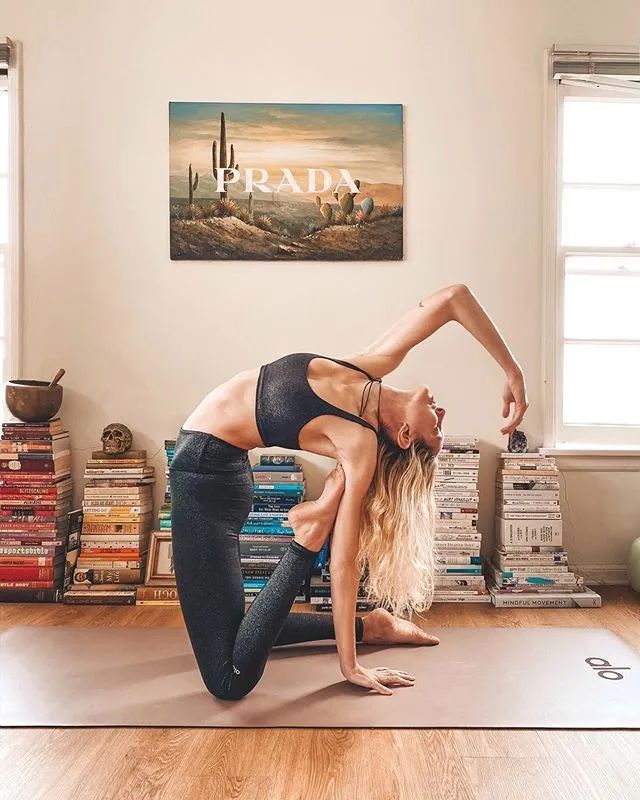Yoga stretching is very important for everyone, not only those who often exercise, especially those office workers who seldom exercise.

But as a beginner of yoga, you may not know how to stretch accurately and scientifically.
I recommend 18 high-definition yoga anatomy maps for you.
Even beginners can know where to stretch each action at a glance.
Attention: pay attention to breathing when practicing! Slow and gentle stretching will not cause any pain, and each pose will last for 10 to 30 seconds.
Stretching the muscles that bend the neck mainly involves muscles: the sternocleidomastoid muscle, put your hand on your hips, straighten your back, and gently raise your head and stretch upward.
Stretching the lateral flexors of the neck by an assistant mainly involves muscles: the sternocleidomastoid muscle and the trapezius muscle sit and stand on the upper part, straighten the body, tilt the head to the left ear, find the opposite direction of the left shoulder, and repeat the exercise of the muscles involved in the hero’s forward flexion: the back muscles kneel and stand, the legs are separated, the hips sit to the heels, and the body moves forward, trying to touch the ground with the forehead.
The muscles involved in the camel pose: the rectus abdominis and the external oblique abdominis, and the hips push forward, Slightly upward, do not over squeeze the waist against the wall to extend the muscles involved in the chest muscles: the widest muscles in the back and chest stand facing the wall, push the wall with your right hand and slowly leave the wall, repeat the muscles involved in the sitting angle pose on the other side: adductors and hamstrings sit on the floor, straighten and open your legs, do not bend your knees, tilt your body forward, extend your hands forward along your legs, and the muscles involved in the side shoulder extension pose: stand with the lateral deltoid muscles, Straighten your arms and press gently to increase the stretching of muscles.
Repeat the muscles involved in standing neck stretching with the other hand: stand with trapezius muscles, legs together, bend your knees slightly, tilt your head forward, and chin to your chest.
Triangle involves muscles: put the external oblique abdominis hand in front of the standing leg, keep the back straight, raise the opposite arm and let the hips open from front to back.
The muscles involved in dog pose against the wall: the muscles with the widest back and chest stand a certain distance against the wall, and the body is parallel to the floor to keep the back flat, and then slowly bend and lie on the back from the chest.
The muscles involved in spinal torsion: hip and external oblique abdominis lie on the back, bend the right knee, Twist the body to the left, stand with the muscles involved in lateral bending: stand with the external oblique muscles and the widest muscles in the back, bend the body to the right, and repeat the exercise on the left.
The muscles involved in the simple one leg forward bending: stand with the hamstring muscles, one foot in front, the back straight, and the hands on the hips.
Fold the other leg forward from the hips.
Repeat the muscles involved in the butterfly pose: sit down with the adductor knee bent, and the soles of the feet are flat relative to the back, Gently place your hands on your knees and bring your hips and knees down close to the ground to embrace the muscles involved in the baby pose: sit on the floor with your hip flexors, straighten your back, slowly pull one leg to your chest and turn your thighs out, and repeat the muscles involved in the pigeon pose with the other leg: sit on the floor with your front tibia, Take back your right hand, hold your right foot with your hand and put it on your left knee.
Repeat the muscles involved in the forward flexion folding style with your left foot: sit on the floor with your hamstrings and calf muscles together, straighten your legs, and fold forward the muscles involved in the sprint style: Lumbar muscles and quadriceps sprint style, bend your left knee 90 degrees in front, grasp your right foot to the waist, and repeat yoga with the other foot.
Beginners want to collect accurate and scientific Yoga stretching anatomy! (the content comes from the Internet, and the copyright belongs to the originator.
If there is any infringement, please contact and delete it in time!) Hot | text | tweet | recommendation (click on the text to jump directly to the article) national classics 100 forum, Chinese general history classic poetry childcare collection, Chinese novels, contradictory literature, foreign novels, classic crosstalk, listen to famous works every day, high-quality audio reading platform, listen to famous works and read good articles every day.
▲ long press to identify the QR code and pay attention to likes is a way to encourage sharing and convey emotions.
After reading it, click “watching” to share it with more people..


